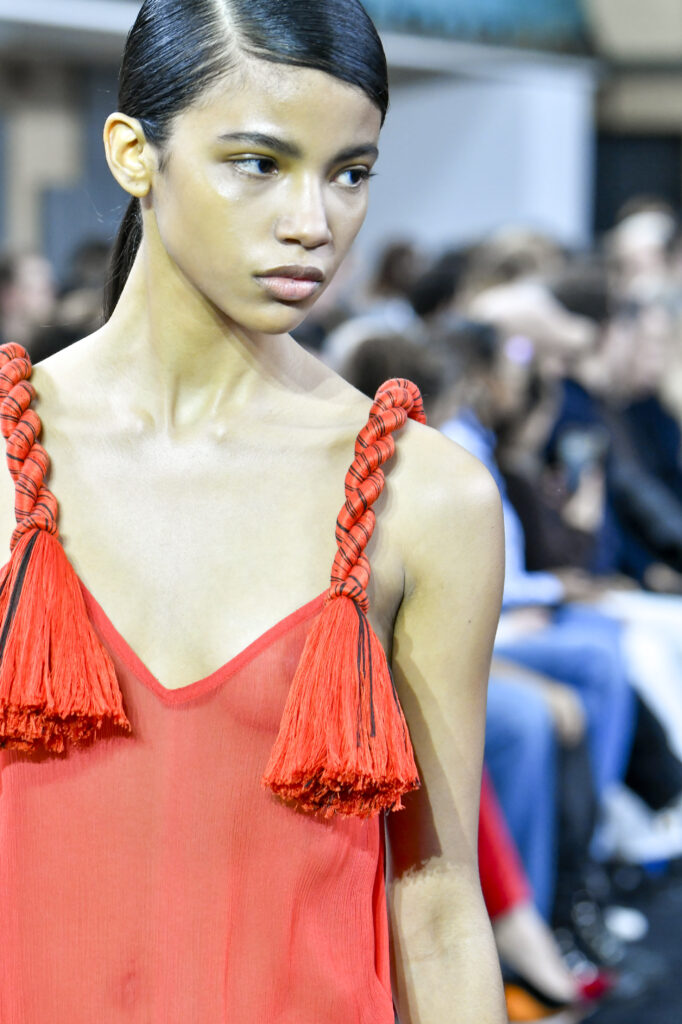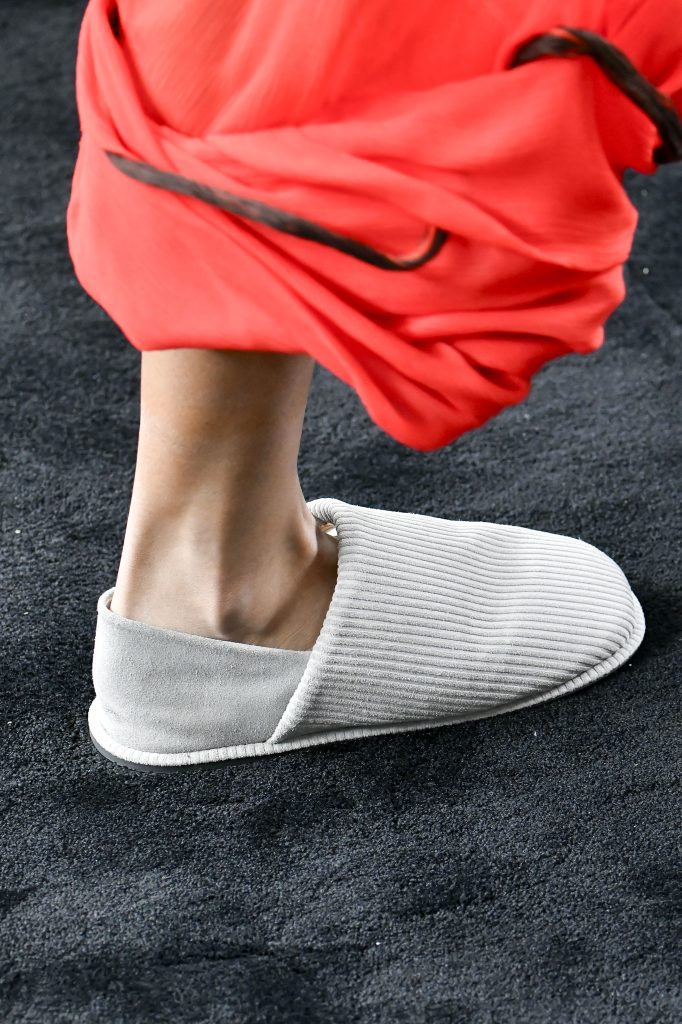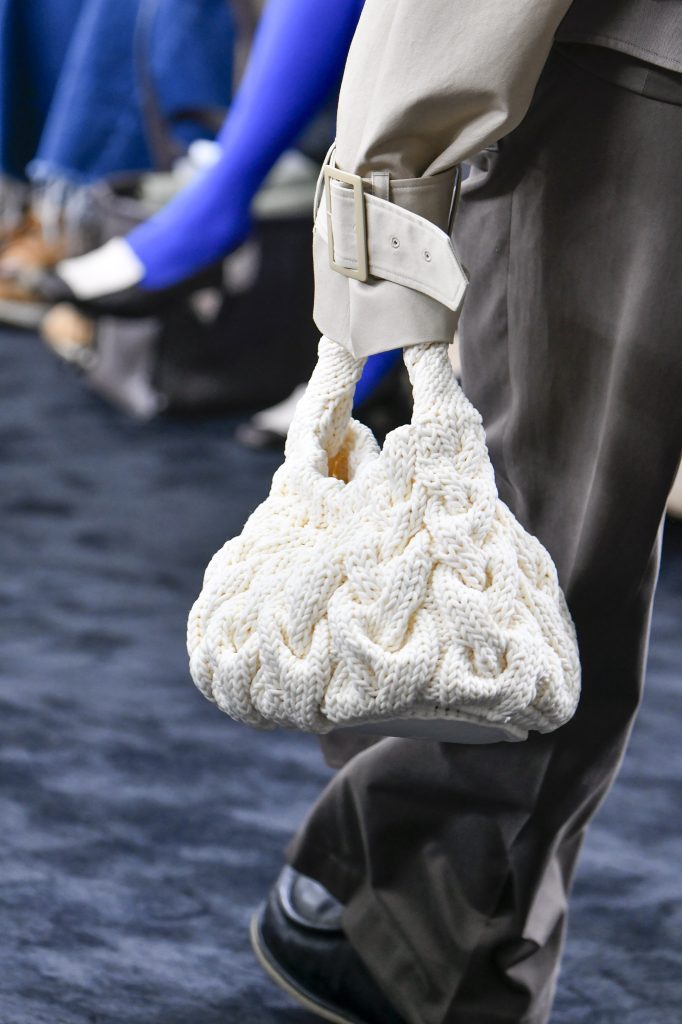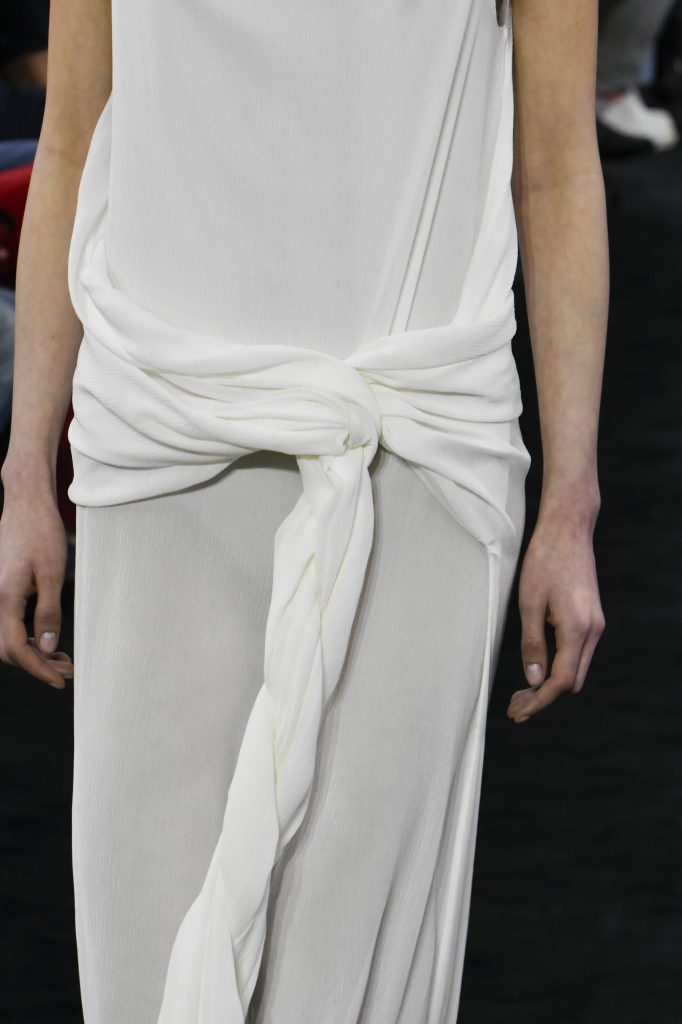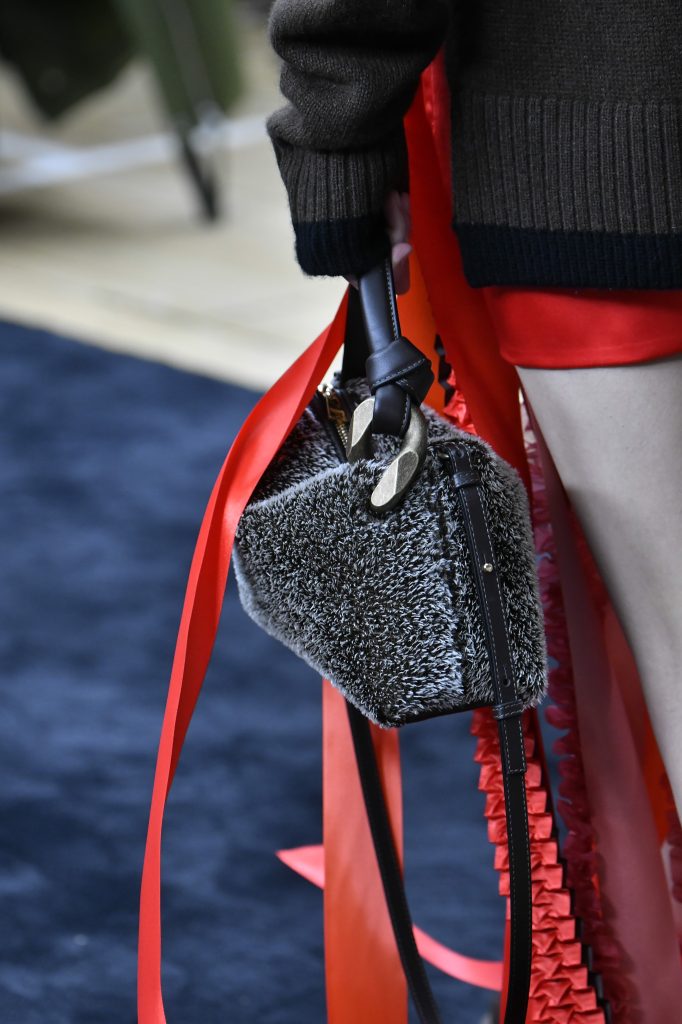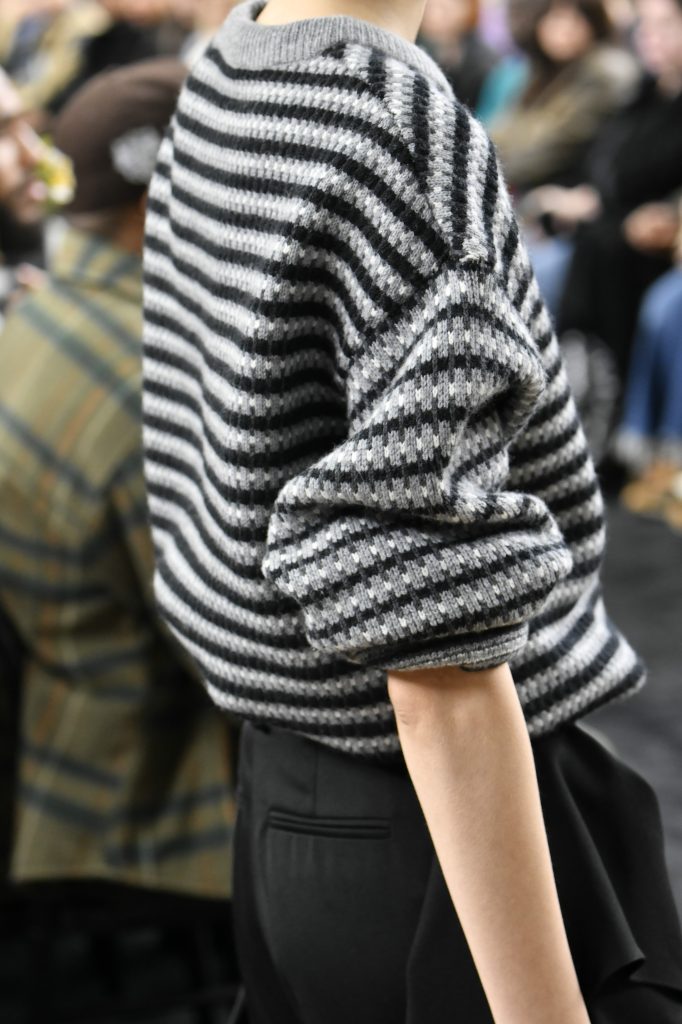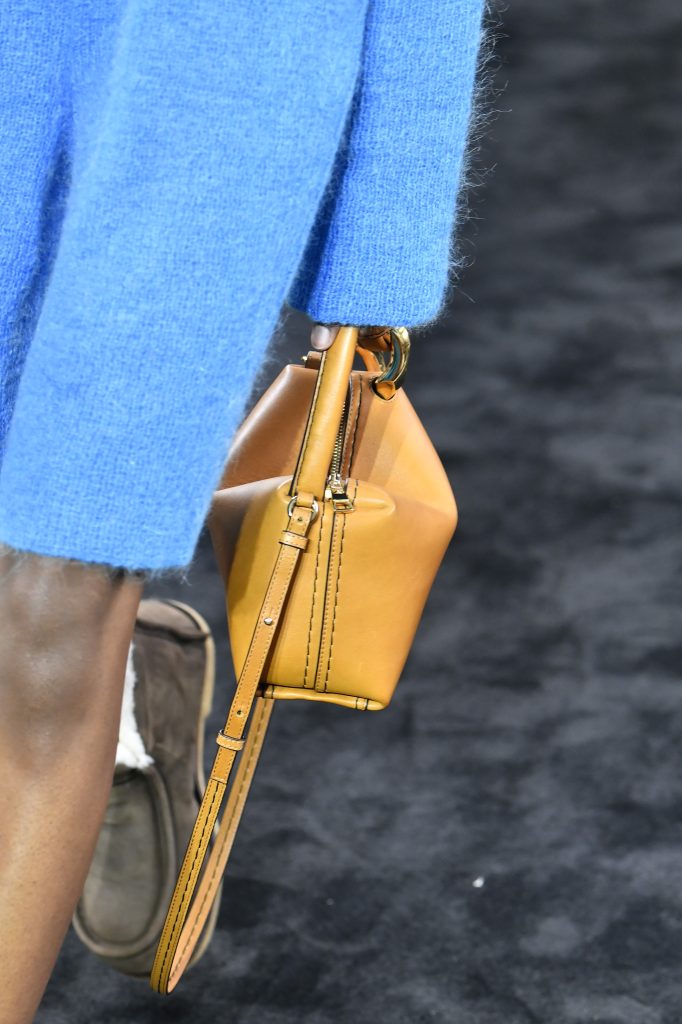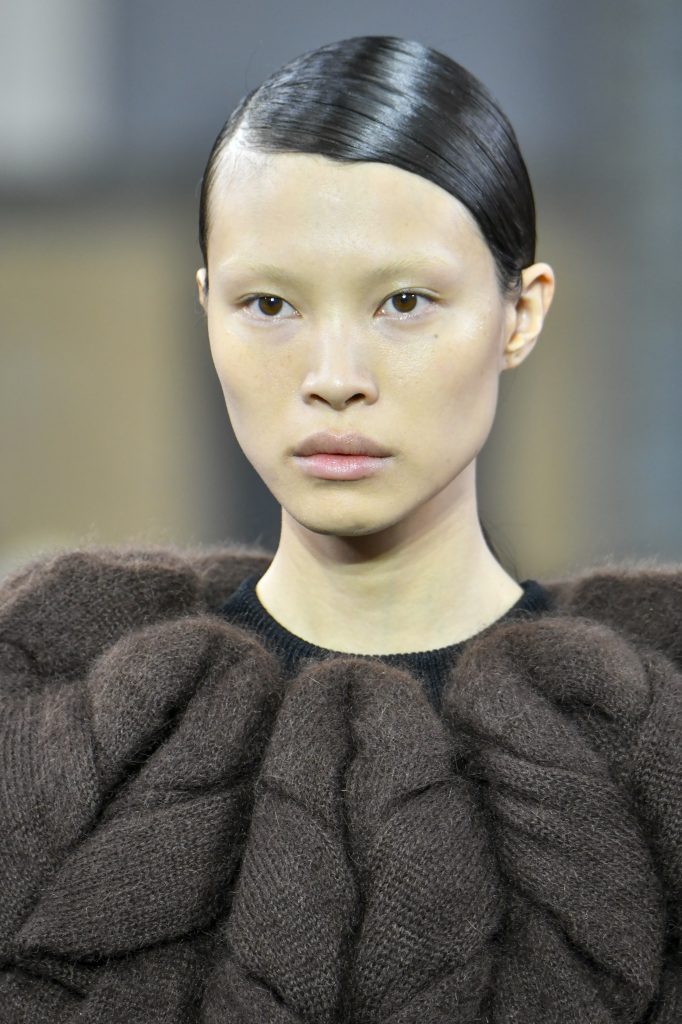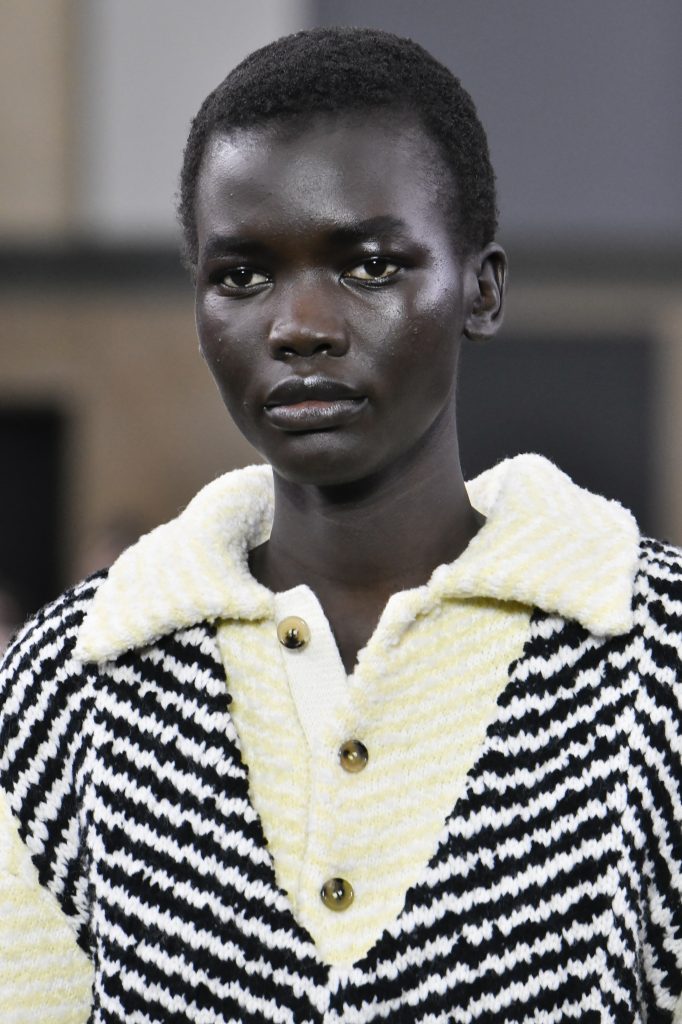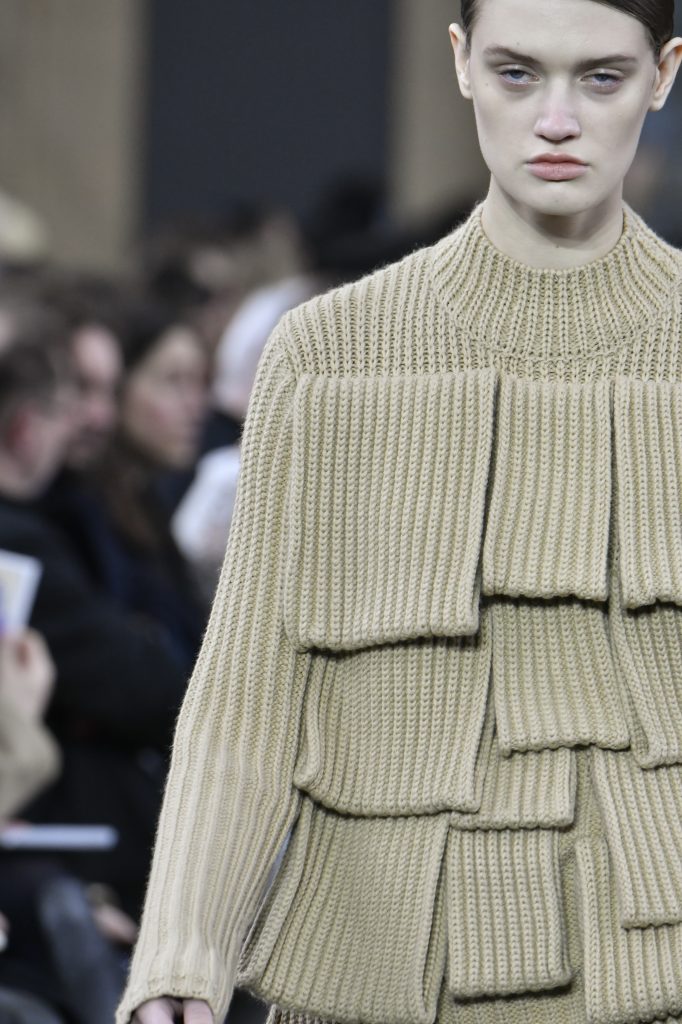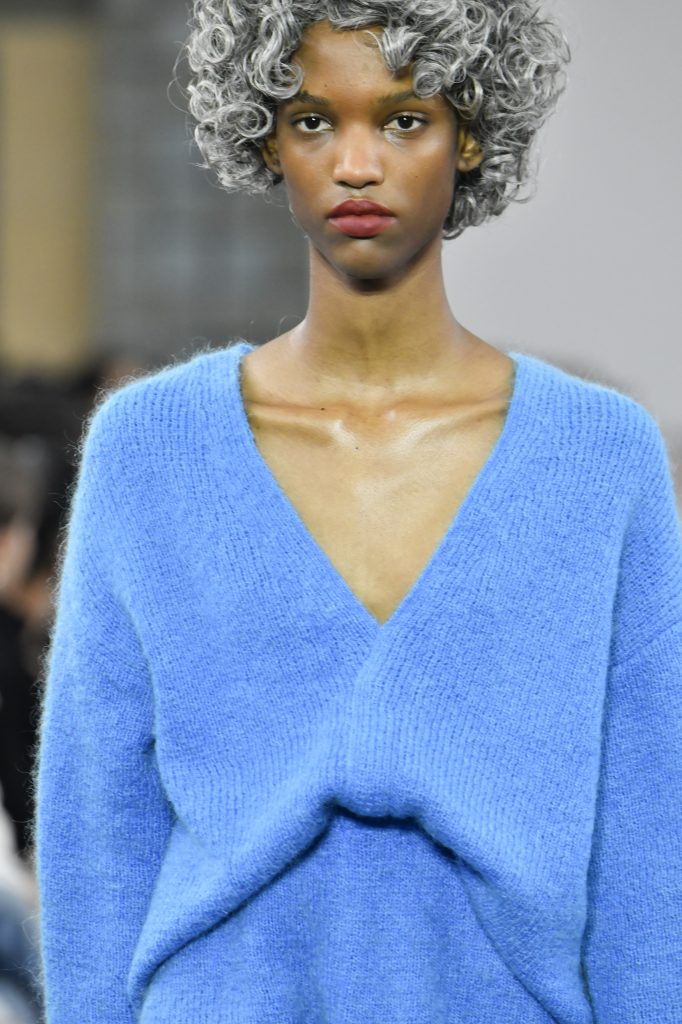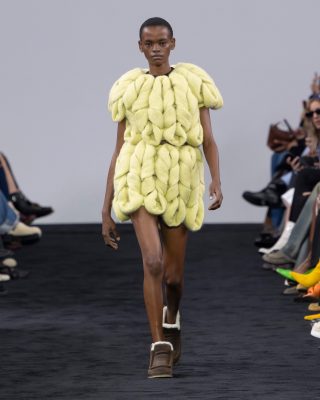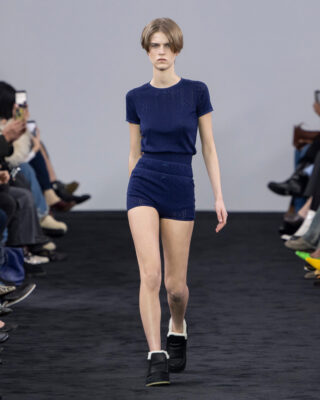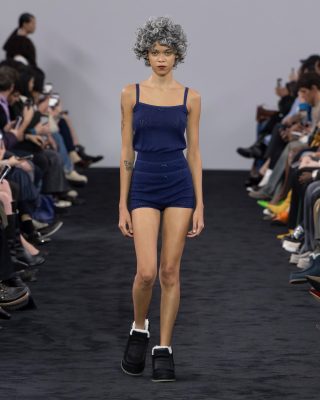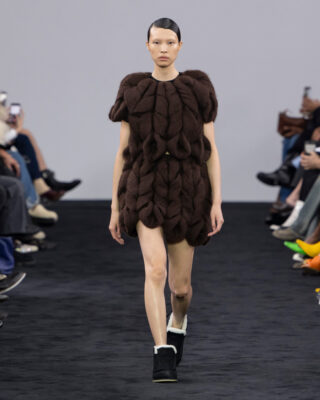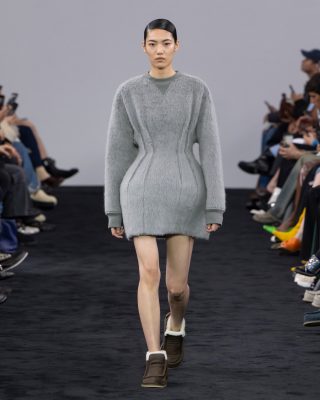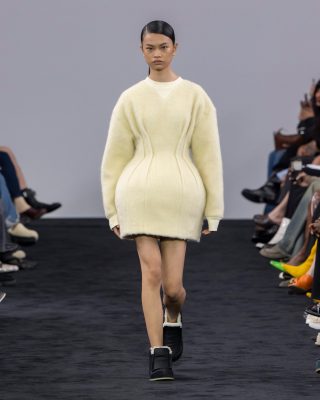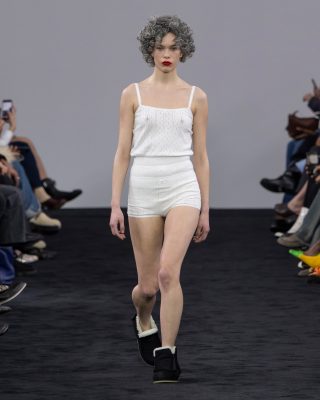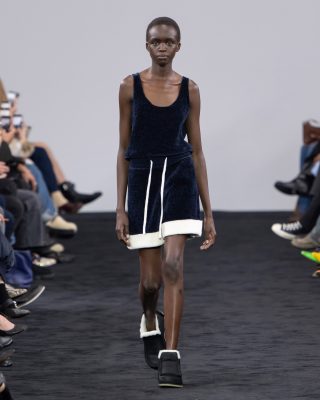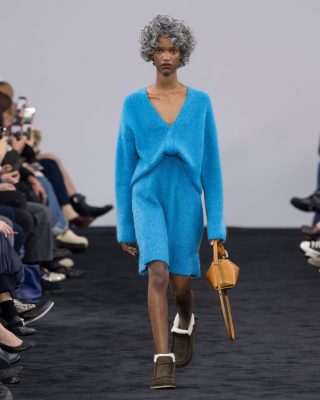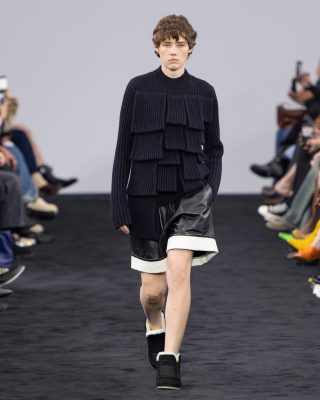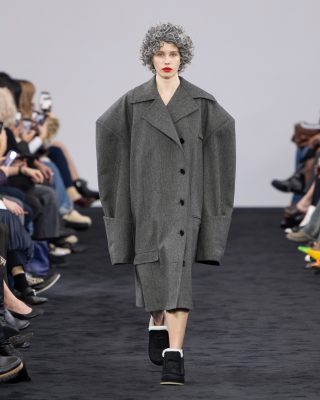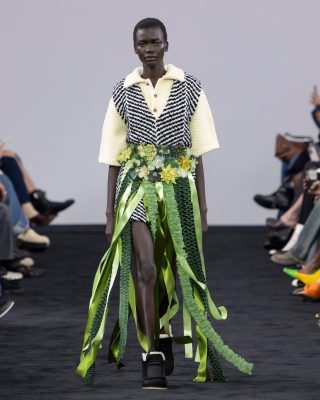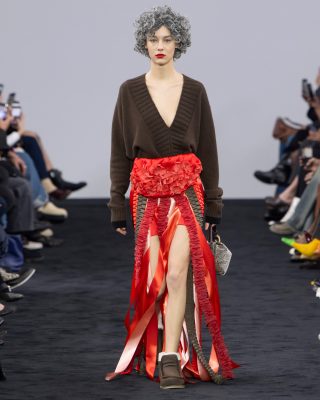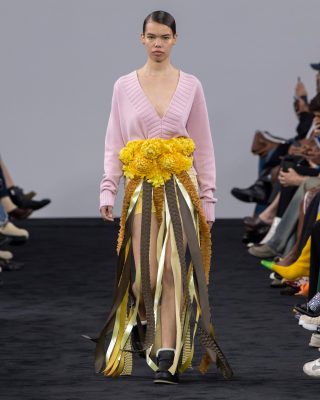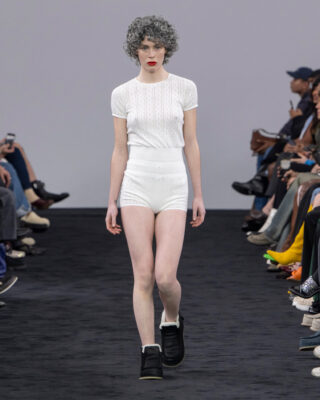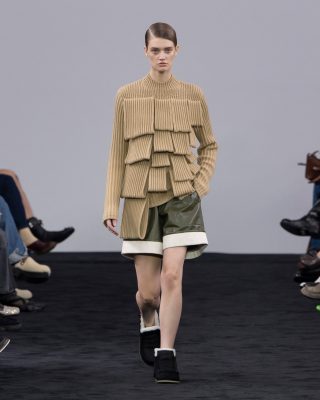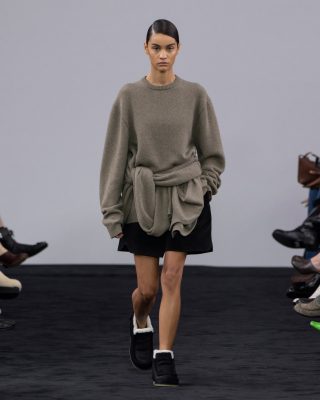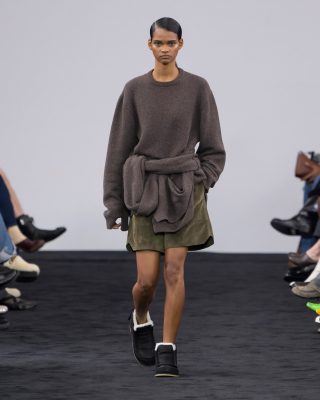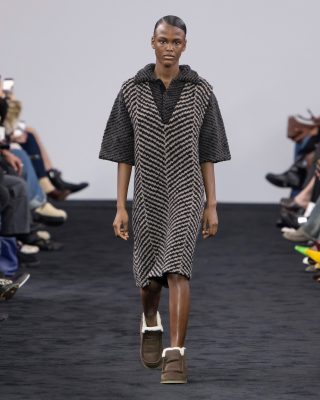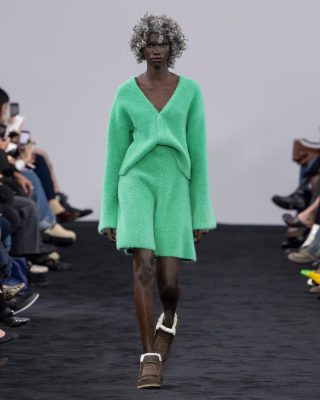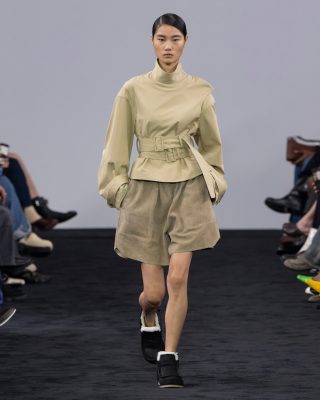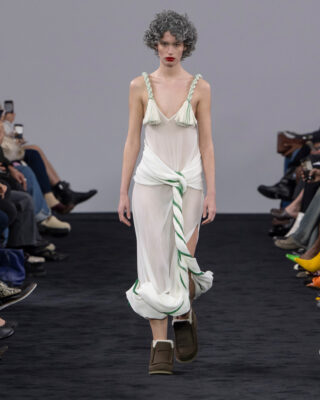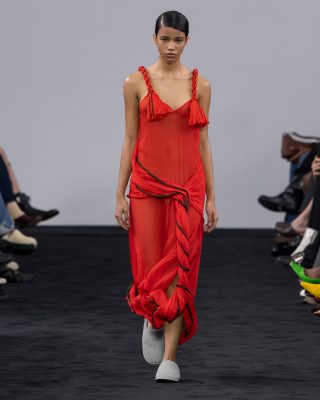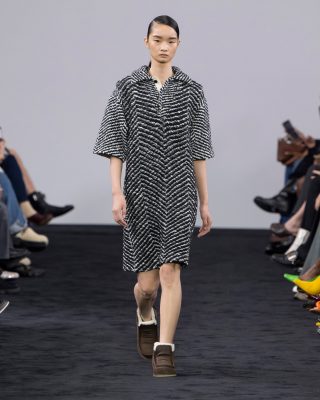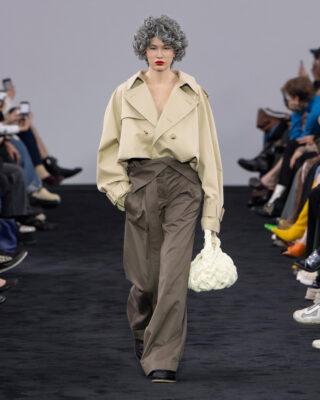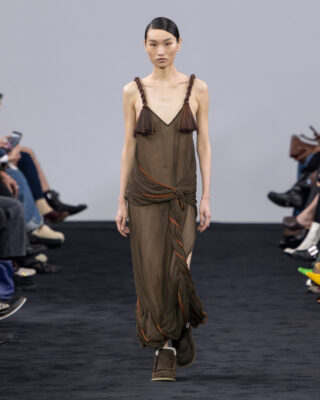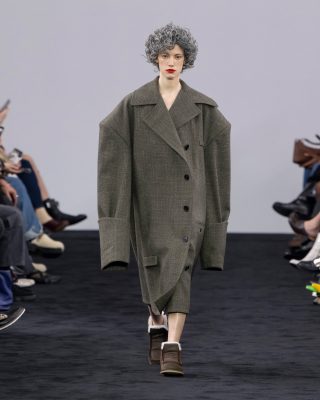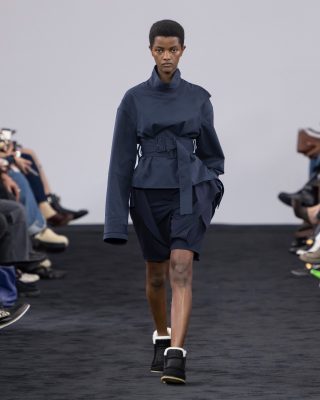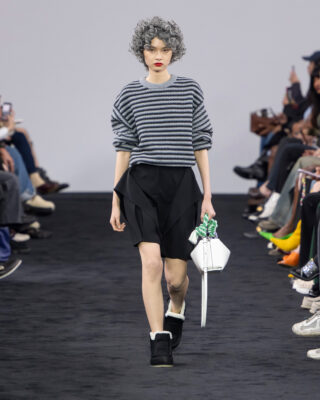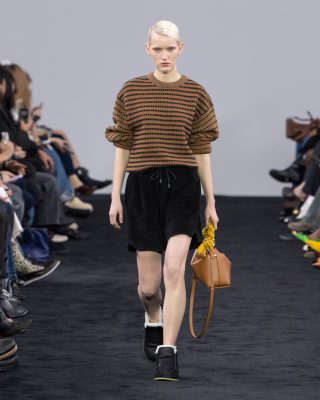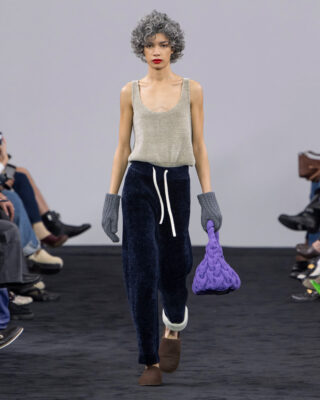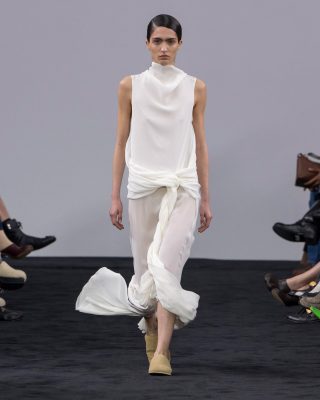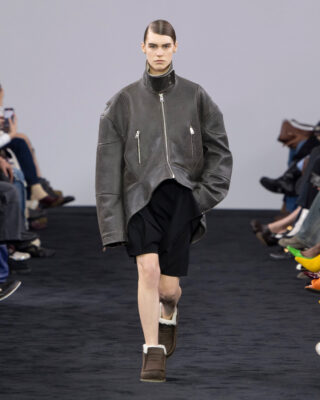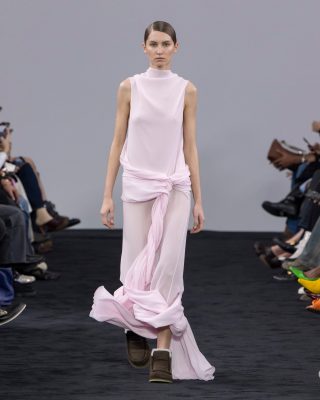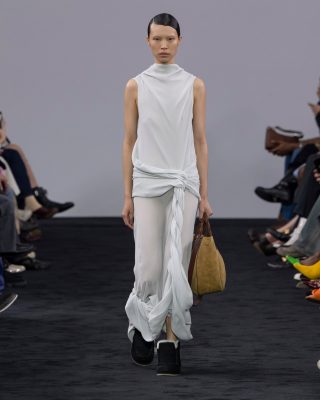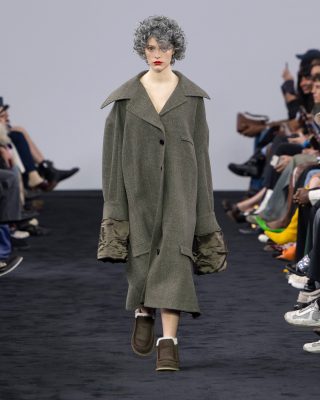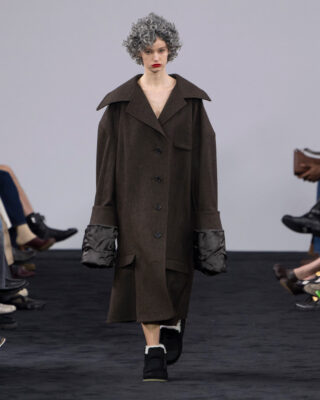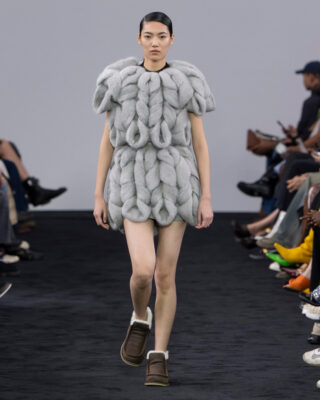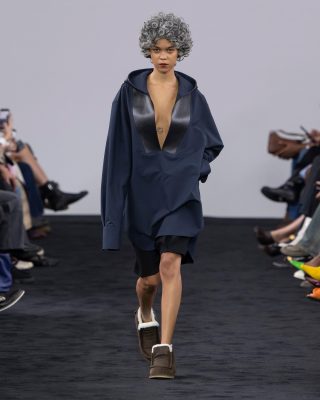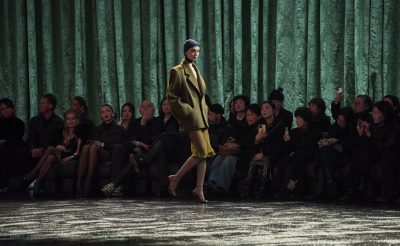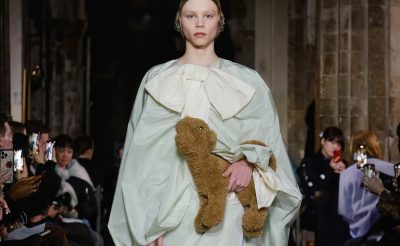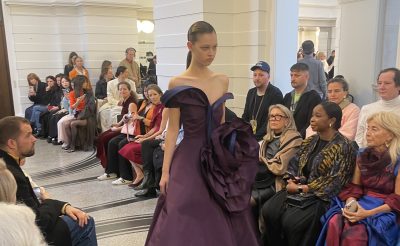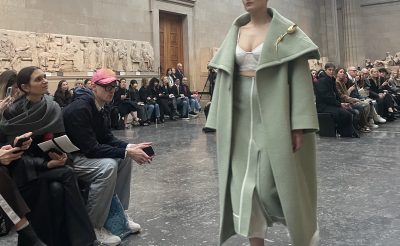By Graciela Martin
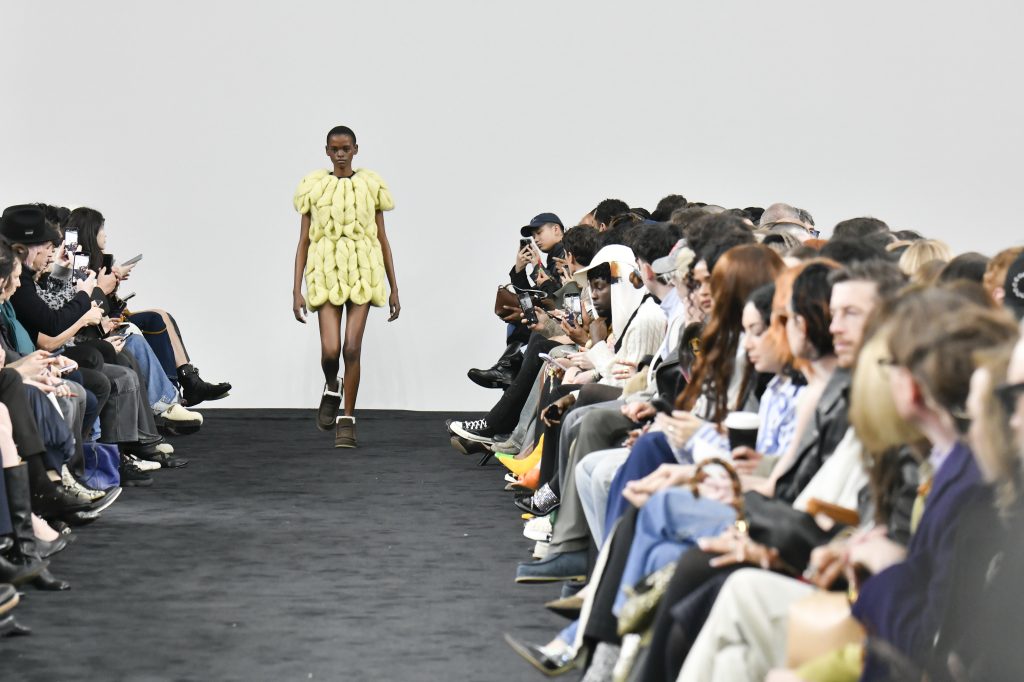
Images courtesy of JW. Anderson.
On Sunday morning at the Seymour Leisure Centre in Marylebone, Jonathan Anderson presented an ode to the quaint charm of British nostalgia, with a nod to “Last of the Summer Wine,” a cherished British sitcom set in Yorkshire, originally broadcast by the BBC from 1973 to 2010.
The show opened with a striking electric yellow oversized chunky knit, setting the tone for a series of cosy ensembles that blurred the lines between indoor comfort and outdoor flair. The models donned grey set-curl wigs, wore pointelle thermals, knit pants and shirts and paraded in oversized English tweeds and slipper-like shoes, calling to mind the notion of elderly villagers with a satirical flair.
The show notes spoke of a “grotesque everydayness”, mirrored in the exaggerated distortions and proportions that played throughout the collection. Indeed, Anderson is known for having a penchant for everyday exaggeration. A standout piece was a voluminous coat, devoid of form-fitting lines, crafted from herringbone fabric. He explained it was reminiscent of market finds that would be transformed at home with sewing patterns from John Lewis. This nod to DIY fashion was further emphasised by the show’s invitations, ingeniously printed on swatches of the same herringbone material.
Backstage, amidst a crowd that more closely resembled a throng of journalists questioning a politician during a crisis than a typical fashion show Q&A, Jonathan Anderson – the man of the moment – shared his fascination with the archetype of the “nosey neighbour”, a figure reminiscent of a time when community bonds were stronger and fashion was a personal affair. He imagined this character donning a Marks & Spencer blouse from the 1970s, encapsulating the blend of the mundane and the nostalgic.
If glorifying age is such an important statement, then why employ young models with grey-haired wigs instead of casting older ones? But Anderson didn’t make a name for himself by handing us the conventional. The Irish designer aimed to capture youth’s fleeting romance with nostalgia – a cycle of discovery, glorification and eventual abandonment of past trends. This transient relationship with the past, according to Anderson, is not a lament but a testament to the ever-evolving nature of fashion and its ability to resurrect and redefine the old.
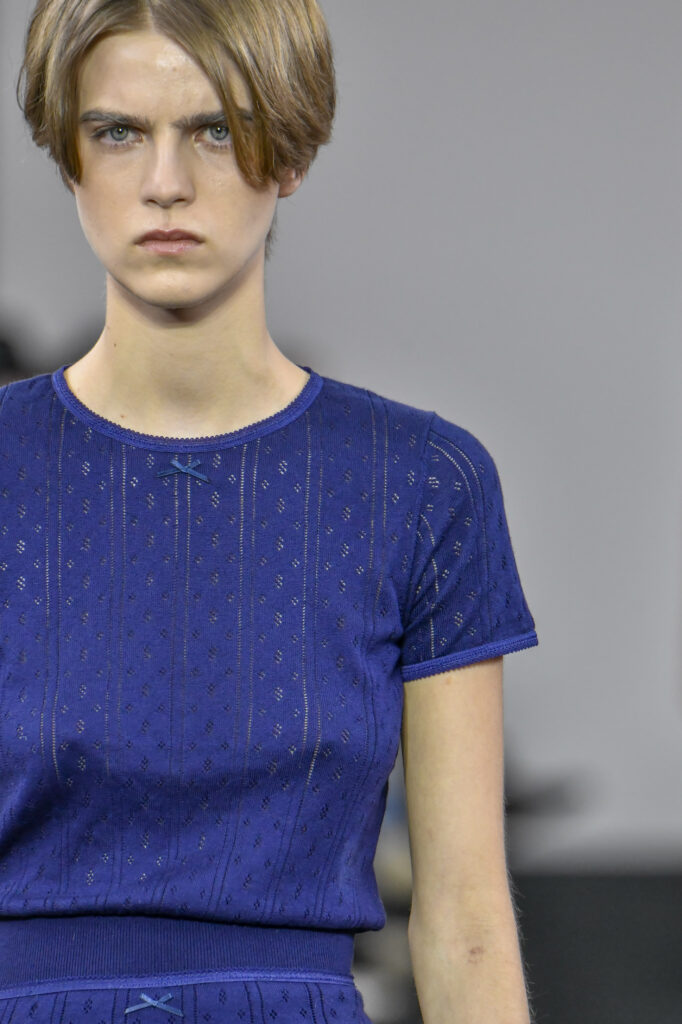
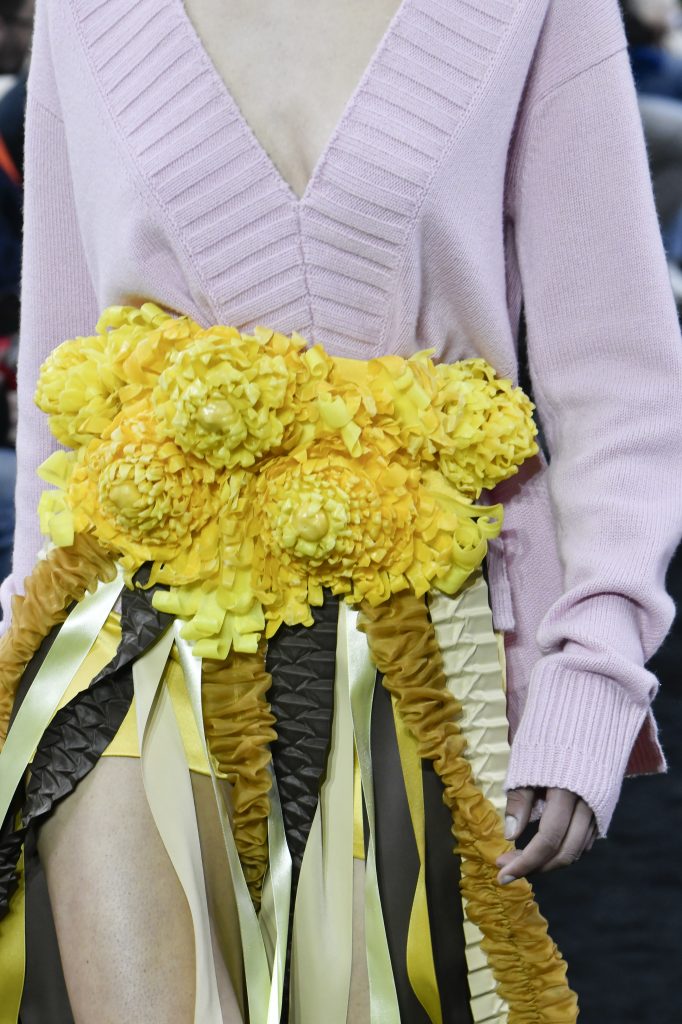
The show opened with a striking electric yellow oversized chunky knit, setting the tone for a series of cosy ensembles that blurred the lines between indoor comfort and outdoor flair. The models, donning grey set-curl wigs, wore pointelle thermals, knit (under)pants and shirts along with oversized English tweeds and slipper-like shoes, imbuing the notion of elderly villagers with a satirical flair.
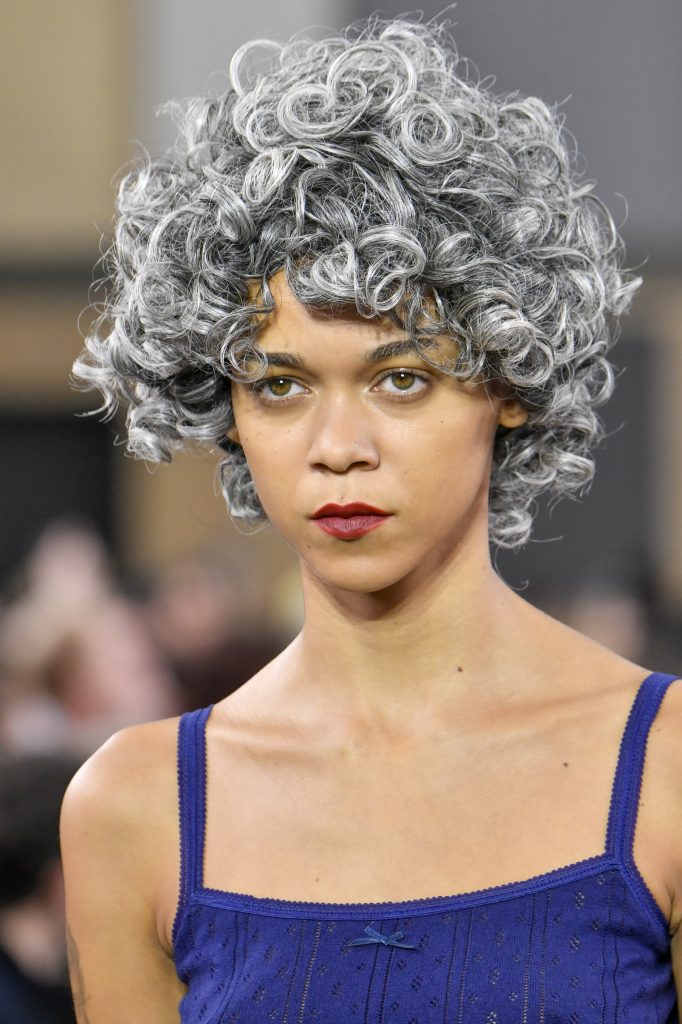
The show notes spoke of a “grotesque everydayness,” mirrored in the exaggerated distortions and proportions that played throughout the collection. Indeed, Anderson is known for having a penchant for everyday exaggeration. A standout piece was a voluminous coat, devoid of form-fitting lines, crafted from herringbone fabric. He explained it was reminiscent of market finds that would be transformed at home with sewing patterns from John Lewis. This nod to DIY fashion was further emphasised by the show’s invitations, ingeniously printed on swatches of the same herringbone material.
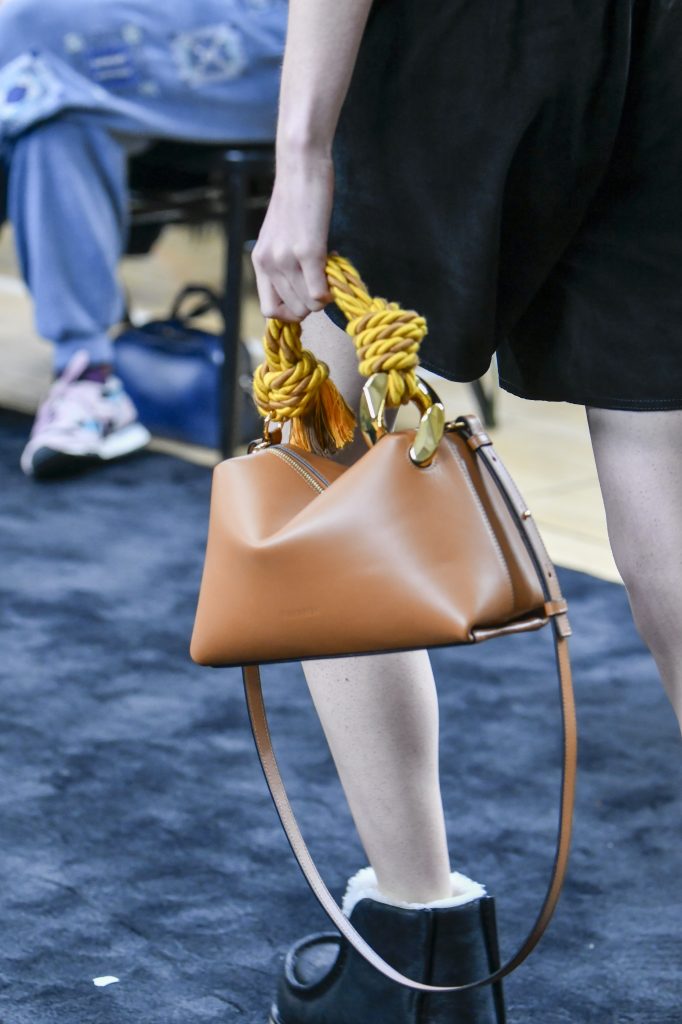
Backstage, amidst a crowd that more closely resembled a throng of journalists questioning a politician during a crisis than a typical fashion show Q&A, Jonathan Anderson—the man of the moment—shared his fascination with the archetype of the “nosey neighbour” – a figure reminiscent of a time when community bonds were stronger, and fashion was a personal affair. He imagined this character donning a Marks & Spencer blouse from the 1970s, encapsulating the blend of the mundane and the nostalgic.

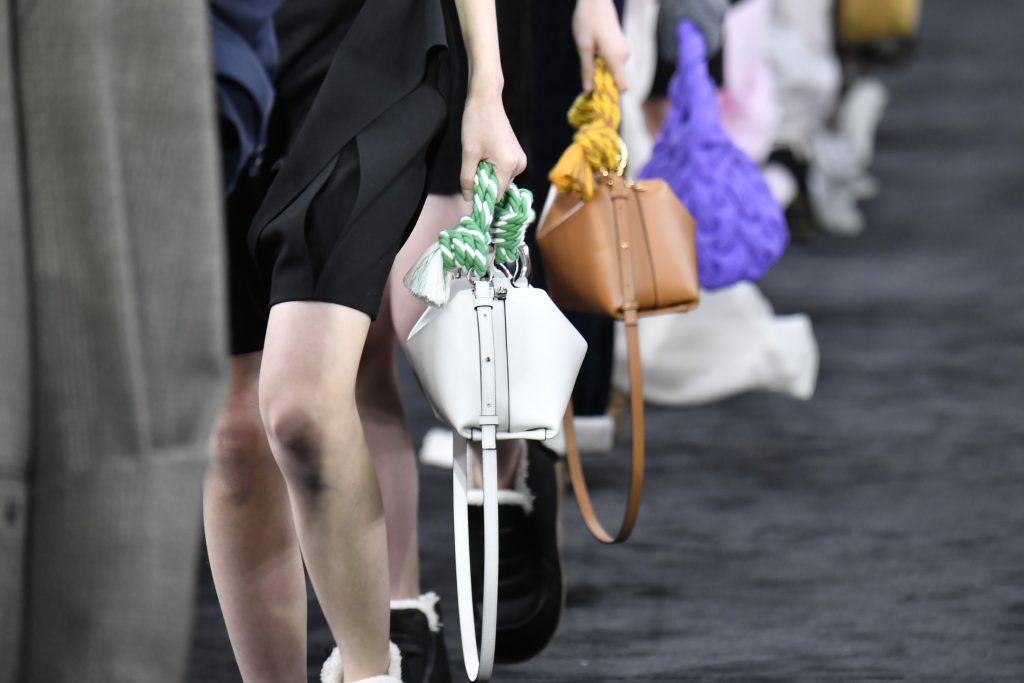
If glorifying age is such an important statement, then Employing young models with grey-haired wigs instead of casting older ones? Anderson didn’t make a name for himself for handing us the conventional. The Irish designer aimed to capture the youth’s fleeting romance with nostalgia – a cycle of discovery, glorification, and eventual abandonment of past trends. This transient relationship with the past, according to Anderson, is not a lament but a testament to the ever-evolving nature of fashion and its ability to resurrect and redefine the old.

“This, that.
To have one thing, one has to acknowledge the other.
Instead of nostalgia, colloquialism.
In lieu of the sensational, the non apparent.
Rather than notoriety, being secretive.
An inquiry into dressing as a psychological act, looking next door.
The subtle and the loud. A grey wig as a device. And flats. Housewife flats.
Grotesque everydayness, in grotesque distortions and proportions.
Knitted dresses, jumpers and shorts.
Knots, and dowdy fits.
Scraps of a trench coat, and rosettes.
Too much space between the body and a coat; too little between the curves and
a camisole.
Draping, more knots and curtain draping.
More rosettes.
A neutral palette.
Hints of newness, through subtlety.
Tropes and types: the ones that usually get unnoticed.
This, that.”
